



the unknown world: what is my place?
This artistic work asks questions using phrases that are either positive or negative statements, or questions that directly concern the audience. They question or affirm what the audience is saying about their positions. However, given that they are written in Incognita, we don't understand their substance. So we still don't know whether our thoughts are right or wrong, unless we make a very special effort to understand the message, a metaphor for introspection as a solution to our inner questioning. The subject of the sentence is written in French and Helvetica, which makes it understandable. We don't understand whether the rest of the sentence supports or criticises this subject, this place.
The sentences are written over old images, which have a history and a more or less strong emotional heritage. Their essence has been erased, leaving only the memory and remembrances of their history, reminiscences of textures and imprints. All that remains is a fracture in time, a silence, the loudest of all silences, that of oblivion, mourning and death.
The knowledge that a phrase, that the plasticity of a thought has replaced an image (the old painting covered over) also raises the question of our legitimacy, of what we know of our memory, and of the reliability of our foundations. In the end, what place should I take? What is my place and where can I find it? How should I position myself? What's my posture like?
acrylic used to cover old paintings
more yet to come
2025
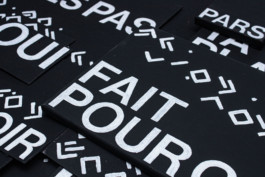
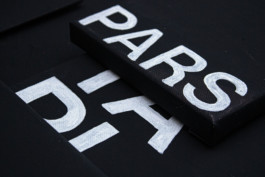
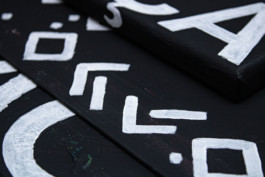
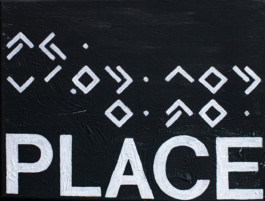
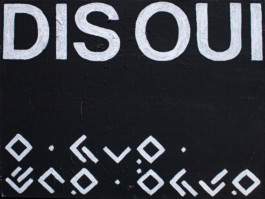
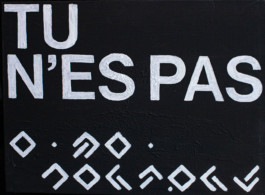
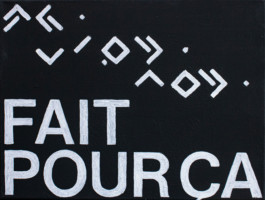
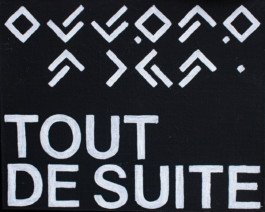
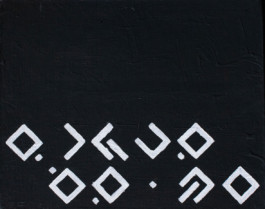
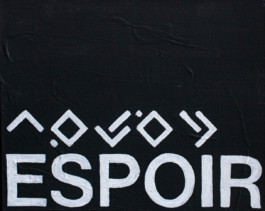
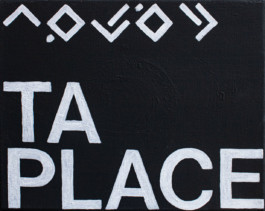
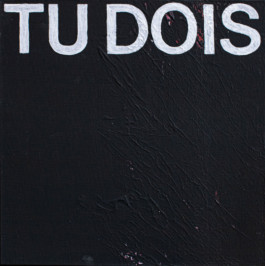
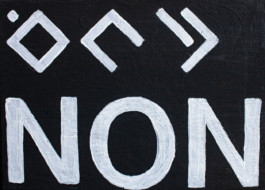
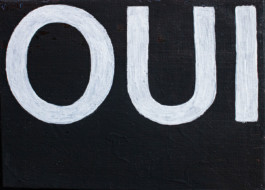
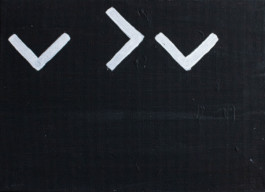
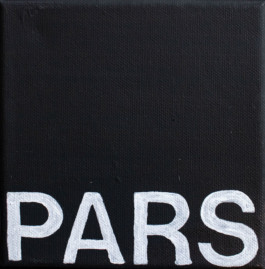

the unknown world: what is my place?
This artistic work asks questions using phrases that are either positive or negative statements, or questions that directly concern the audience. They question or affirm what the audience is saying about their positions. However, given that they are written in Incognita, we don't understand their substance. So we still don't know whether our thoughts are right or wrong, unless we make a very special effort to understand the message, a metaphor for introspection as a solution to our inner questioning. The subject of the sentence is written in French and Helvetica, which makes it understandable. We don't understand whether the rest of the sentence supports or criticises this subject, this place.
The sentences are written over old images, which have a history and a more or less strong emotional heritage. Their essence has been erased, leaving only the memory and remembrances of their history, reminiscences of textures and imprints. All that remains is a fracture in time, a silence, the loudest of all silences, that of oblivion, mourning and death.
The knowledge that a phrase, that the plasticity of a thought has replaced an image (the old painting covered over) also raises the question of our legitimacy, of what we know of our memory, and of the reliability of our foundations. In the end, what place should I take? What is my place and where can I find it? How should I position myself? What's my posture like?
acrylic used to cover old paintings
more yet to come
2025















